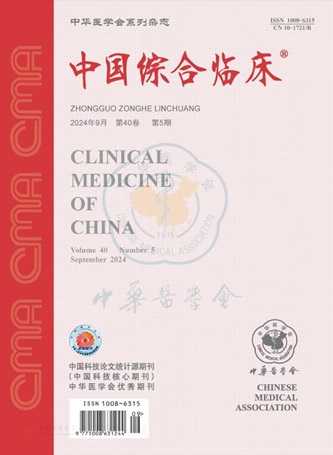Study on the relationship between vitamin D, grip strength and muscle mass in elderly diabetic patients
引用次数: 0
Abstract
Objective To study the relationship between vitamin D level and muscle mass and grip strength in elderly patients with type 2 diabetes mellitus (T2DM). Methods From May 2016 to January 2018, 201 patients with type 2 diabetes mellitus aged ≥ 60 who were admitted to the Department of endocrinology of Xuanwu Hospital were selected for prospective study. According to 25-hydroxyvitamin D level(25(OH)D), the patients were divided into the vitamin D deficiency group (25(OH)D<20 μg/L, 140 cases) and the non-deficiency group (20 μg/L≤25(OH)D<70 μg/L, 61 cases). The grip strength, walking speed and muscle mass of upper and lower limbs were measured.Physical examination and laboratory examination were carried out. Results There was no significant difference between the two groups (P>0.05). The grip strength, upper limb and lower limb muscle contents in the non deficiency group were significantly higher than those in the deficiency group ((33.49±9.43) kg vs.(29.59±10.30) kg, (4.99±1.09) kg vs.(4.57±1.11) kg, (15.69±3.10) kg vs.(14.54±3.03) kg, P=0.01, 0.015, 0.017). Multivariate logistic regression analysis showed that vitamin D deficiency was independently related to grip strength and lower limb muscle mass(OR=1.286, 95% CI: 1.197-1.346, P<0.01; OR=1.231, 95%CI: 1.102-1.283, P<0.05). Conclusion Vitamin D deficiency is a risk factor for the decrease of grip strength and lower extremity muscle mass in elderly patients with type 2 diabetes. Key words: Type 2 diabetes; Vitamin D; Grip; Muscle mass老年糖尿病患者维生素D、握力与肌肉质量关系的研究
目的探讨老年2型糖尿病(T2DM)患者维生素D水平与肌肉质量和握力的关系。方法选择2016年5月至2018年1月入住宣武医院内分泌科的201例年龄≥60岁的2型糖尿病患者进行前瞻性研究。根据25-羟基维生素D水平(25(OH)D),将患者分为维生素D缺乏组(25(OHD0.05)。非缺乏组的握力、上肢和下肢肌肉含量显著高于缺乏组((33.49±9.43)kg对(29.59±10.30)kg、(4.99±1.09)kg对,0.015,结论维生素D缺乏是老年2型糖尿病患者握力和下肢肌肉质量下降的危险因素。关键词:2型糖尿病;维生素D;握力;肌肉质量
本文章由计算机程序翻译,如有差异,请以英文原文为准。
求助全文
约1分钟内获得全文
求助全文
来源期刊
CiteScore
0.10
自引率
0.00%
发文量
16855
期刊介绍:
Clinical Medicine of China is an academic journal organized by the Chinese Medical Association (CMA), which mainly publishes original research papers, reviews and commentaries in the field.
Clinical Medicine of China is a source journal of Peking University (2000 and 2004 editions), a core journal of Chinese science and technology, an academic journal of RCCSE China Core (Extended Edition), and has been published in Chemical Abstracts of the United States (CA), Abstracts Journal of Russia (AJ), Chinese Core Journals (Selection) Database, Chinese Science and Technology Materials Directory, Wanfang Database, China Academic Journal Database, JST Japan Science and Technology Agency Database (Japanese) (2018) and other databases.

 求助内容:
求助内容: 应助结果提醒方式:
应助结果提醒方式:


